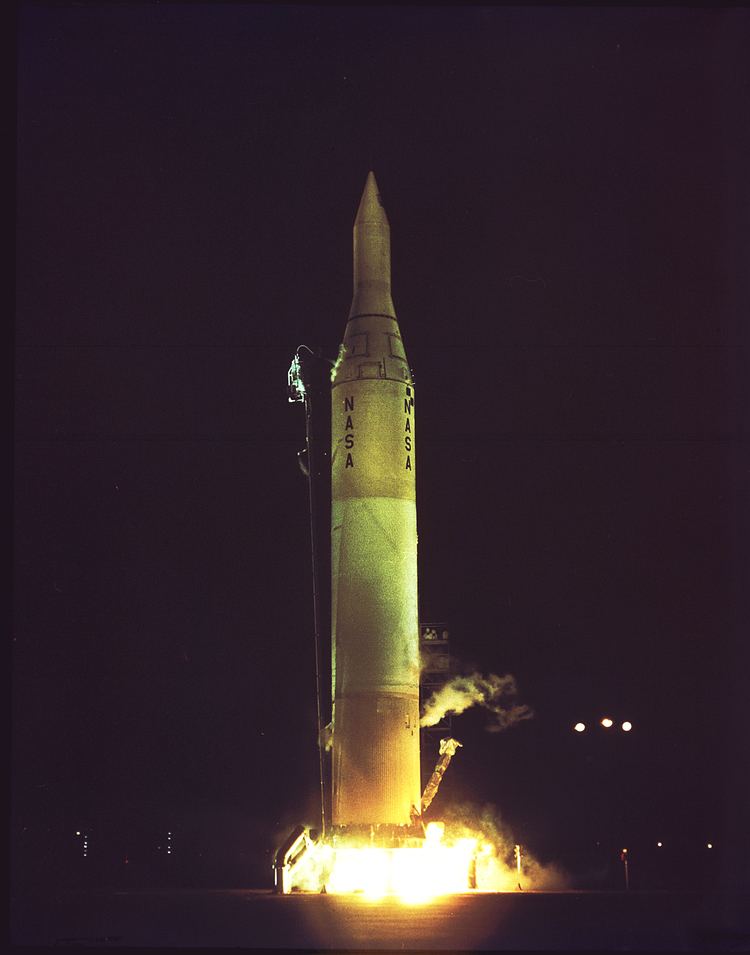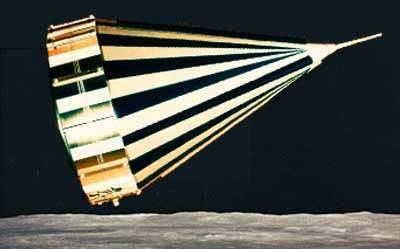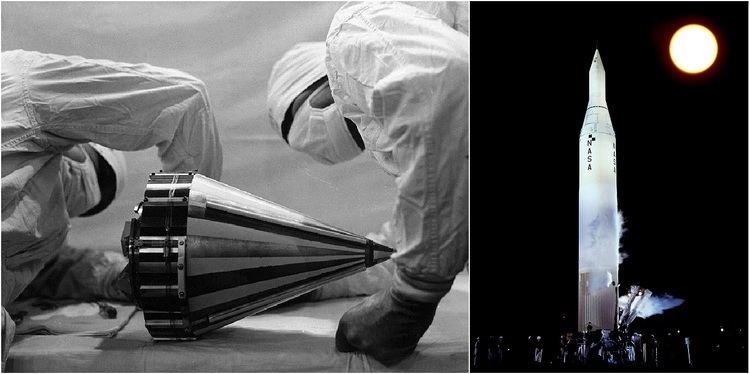Mission type Lunar flyby Harvard designation 1959 Nu 1 SATCAT no. 113 Max speed 7,230 km/h Last contact 6 March 1959 | COSPAR ID 1959-013A Mission duration 3 days and 10 hours Launch date 3 March 1959 Cost 150 million USD | |
 | ||
Manufacturer Space Technology Laboratories, Inc. Similar Pioneer 3, Pioneer 2, Pioneer 5, Pioneer 1, Explorer 35 | ||
1959 pioneer 4 nasa
Pioneer 4 was an American spin-stabilized unmanned spacecraft launched as part of the Pioneer program on a lunar flyby trajectory and into a heliocentric orbit making it the first probe of the United States to escape from the Earth's gravity. It carried a payload similar to Pioneer 3: a lunar radiation environment experiment using a Geiger–Müller tube detector and a lunar photography experiment. It passed within 58,983 km of the Moon's surface. However, Pioneer 4 did not come close enough to trigger its photoelectric sensor. The spacecraft was still in solar orbit as of 1969. It was the only successful lunar probe launched by the U.S. in seven attempts between 1958–60; only in 1963 would Ranger 6 surpass its success by accomplishing all of its mission objectives.
Contents
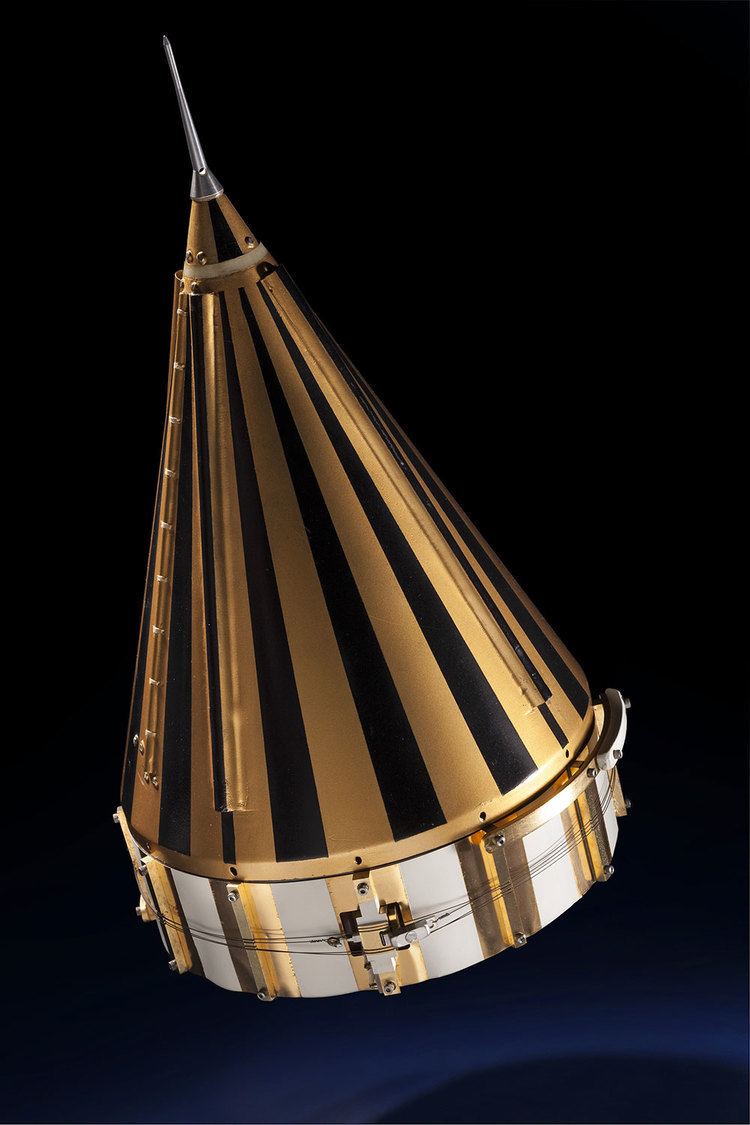
Spacecraft design
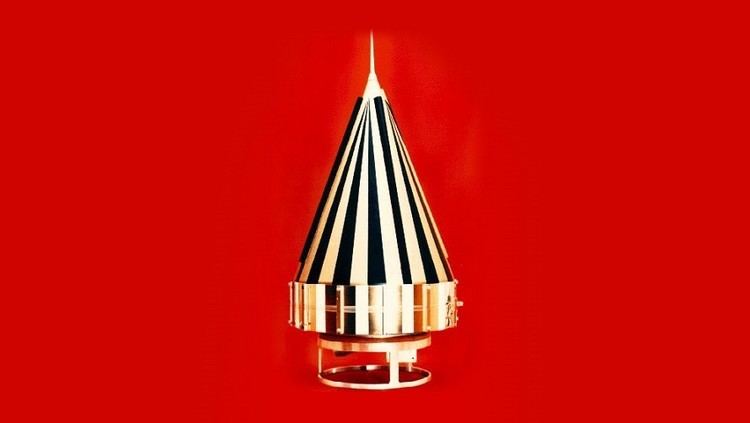
Pioneer 4 was a cone-shaped probe 51 cm high and 23 cm in diameter at its base. The cone was composed of a thin fiberglass shell coated with a gold wash to make it electrically conducting and painted with white stripes to maintain the temperature between 10 and 50 degrees Celsius. At the tip of the cone was a small probe which combined with the cone itself to act as an antenna. At the base of the cone a ring of mercury batteries provided power. A photoelectric sensor protruded from the center of the ring. The sensor was designed with two photocells which would be triggered by the light of the Moon when the probe was within about 30,000 km of the Moon. At the center of the cone was a voltage supply tube and two Geiger–Müller tubes. A transmitter with a mass of 0.5 kilograms delivered a phase modulated signal of 0.1 W at a frequency of 960.05 MHz. The modulated carrier power was 0.08 W and the total effective radiated power 0.18 W. A despin mechanism consisted of two 7 gram weights which spooled out to the end of two 150 cm wires when triggered by a hydraulic timer 10 hours after launch. The weights were designed to slow the spacecraft spin from 400 rpm to 6 rpm, and then weights and wires were released.
Launching vehicle
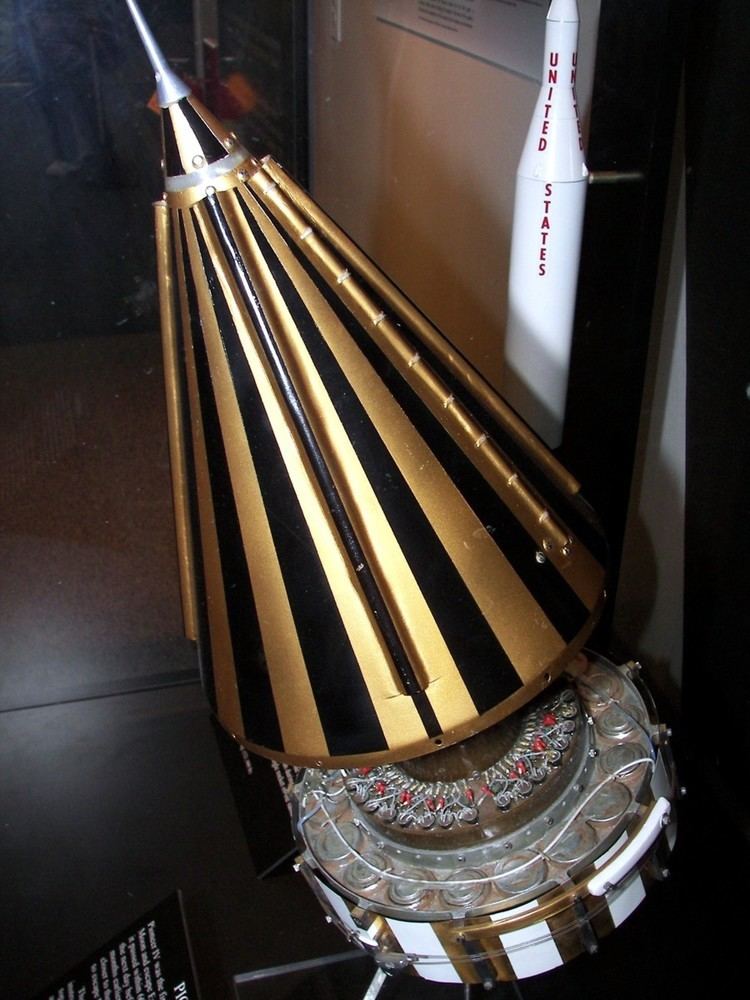
Pioneer 4 was launched with a Juno II launch vehicle, which also launched Pioneer 3. Juno II closely resembled the Juno I (Jupiter-C based) vehicle that launched Explorer 1. Its first stage was a 19.51 m elongated Jupiter IRBM missile that was used by the U.S. Army. On top of the Jupiter propulsion section was a guidance and control compartment that supported a rotating tub containing the rocket stages 2, 3 and 4. Pioneer 4 was mounted on top of stage 4.
Mission

After a successful launch Pioneer 4 achieved its primary objective (an Earth-Moon trajectory), returned radiation data and provided a valuable tracking exercise. The probe passed within 60,000 km of the Moon's surface (7.2° E, 5.7° S) on 4 March 1959 at 22:25 UT (5:25 p.m. EST) at a speed of 7,230 km/h. The distance was not close enough to trigger the photoelectric sensor. The probe continued transmitting radiation data for 82.5 hours, to a distance of 409,000 miles (658,000 km), and reached perihelion on 18 March 1959 at 01:00 UT. The cylindrical fourth stage casing (173 cm long, 15 cm diameter, 4.65 kg) went into orbit with the probe.
